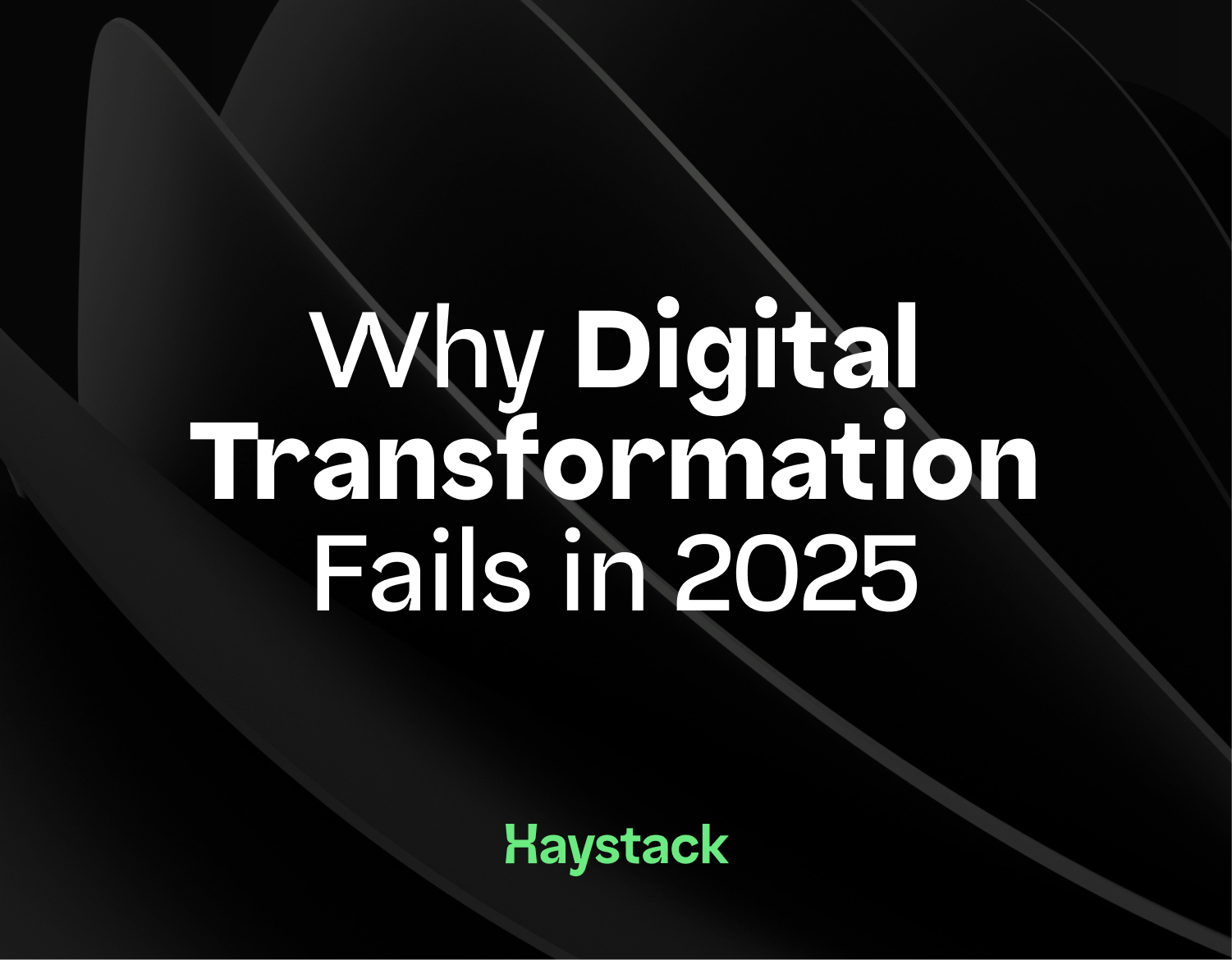Why Digital Transformation Fails (And How to Get It Right in 2025)
June 2025 · 4 minute read
Digital transformation is one of the most overused phrases in business today. Everyone wants to “go digital,” but very few companies actually get it right.
In fact, according to research by Gartner, only 48% of digital transformation initiatives meet or exceed their expected business outcomes.
That’s not just a missed opportunity. It’s wasted time, wasted budget, and sometimes even a step backwards.
So why does digital transformation fail so often? More importantly, what separates the companies that succeed from the ones that don’t?
Let’s break it down.
1. The Vision Is Vague or Too Broad
Most companies start their transformation journey with a goal like “improve efficiency” or “go paperless.” But those goals are too vague to turn into action.
Successful digital transformation starts with a clear, measurable objective such as:
-
Automate client onboarding to reduce admin time by 40%
-
Integrate all systems into a central dashboard for real-time reporting
-
Replace Excel workflows with custom-built software
Clarity leads to momentum. Without it, projects lose focus fast.
2. Technology Is Prioritised Over Strategy
Buying software is not a strategy.
Many teams pick tools because they’re popular, flashy, or have lots of features. But if the tech doesn’t align with your workflows or business model, it becomes a burden instead of a solution.
The key is to define the strategy first, then choose technology that supports it.
That’s why at Haystack, we start with the process and the people before touching a single line of code.
3. Teams Aren’t Brought Into the Process
Digital transformation isn’t just a tech project. It’s a change management project.
The best tools in the world are useless if your team isn’t trained, aligned, and motivated to use them.
You need:
-
Early input from key departments
-
Clear internal communication
-
Simple training and onboarding for every new tool
When your team feels involved, adoption becomes much easier — and long-term success becomes far more likely.
4. One-Size-Fits-All Tools Create Friction
Most off-the-shelf platforms are built for generic businesses. You are not a generic business.
Using rigid, prebuilt tools often leads to:
-
Endless workarounds
-
Extra admin time
-
Siloed data and clunky integrations
Custom software built around your business can solve these issues and scale with you, instead of against you.
5. Results Are Not Measured (or Celebrated)
Companies often launch a new tool, then move on.
But what gets measured gets improved. If you don’t track adoption, usage, and outcomes, you will never know what’s working or what needs fixing.
Successful digital transformation includes:
-
KPIs for every milestone
-
Feedback loops with users
-
Regular performance reviews and improvements
It also includes celebrating progress, because transformation is hard — and recognising success keeps your team motivated.
How to Succeed in 2025
Digital transformation is not a one-time project. It is a mindset and a long-term strategy.
Here’s what works:
-
Start with a specific business outcome
-
Involve the people who will use the tools
-
Build or choose tech that fits your processes
-
Track performance early and often
-
Partner with a team that understands both strategy and software
At Haystack, we help companies turn digital transformation from a buzzword into measurable growth.
Book a Free Strategy Session
If you are planning or currently running a digital transformation initiative, we would love to share insights based on what’s working for businesses like yours.
You can book a free 30-minute strategy session here:
There is no pitch, just clear, practical advice that can help you move forward.
Contact us


